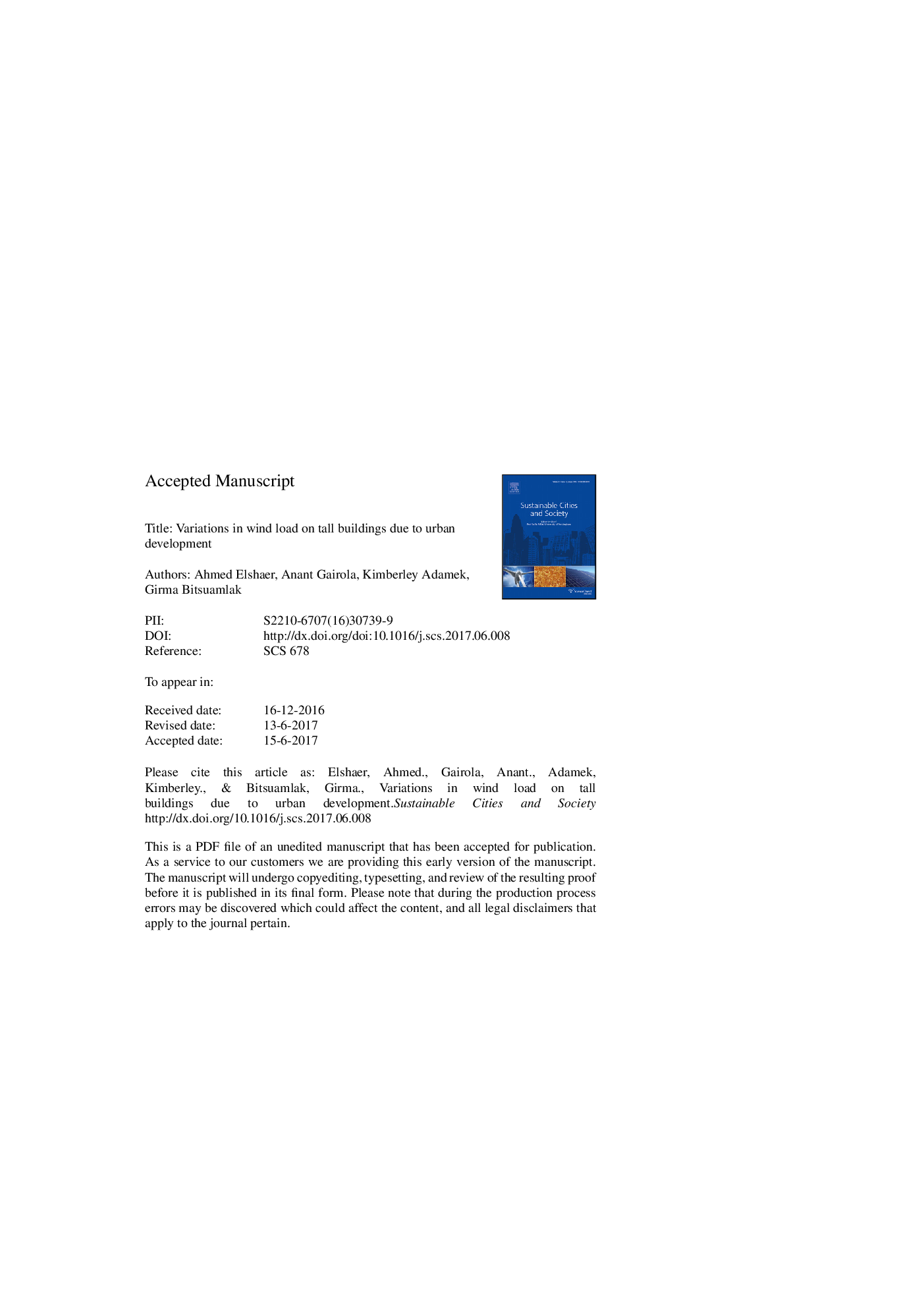| Article ID | Journal | Published Year | Pages | File Type |
|---|---|---|---|---|
| 4928188 | Sustainable Cities and Society | 2017 | 36 Pages |
Abstract
Due to the continuous urban development, it becomes necessary to investigate the complex aerodynamic interactions within the built environment. These interactions lead to a significant variation in wind loads on structural systems and non-structural components. With the change in urban topology, an individual building immersed in a complex surrounding can experience different flow mechanisms, such as wake effects and channeling. These flow mechanisms depend on the shape, height and location of the surrounding structures, which alter with the city development. The current study investigates the risks associated with changing wind loads as urban surroundings develop. The study adopts two cases. Case I examines the change in wind loads on a typical tall building with generic surrounding configuration of different heights. For Case II, the built environment of the Financial District, Toronto is examined for three development stages. The changes in urban topology are found to have different impacts on structural and non-structural elements from wind hazard perspective. Based on the study cases, mean wind pressures are reduced while fluctuations are increased as the urban environment becomes denser. The effect of increased pressure fluctuations on cladding elements is viewed as a higher wind risk due to damage accumulation.
Keywords
Related Topics
Physical Sciences and Engineering
Energy
Renewable Energy, Sustainability and the Environment
Authors
Ahmed Elshaer, Anant Gairola, Kimberley Adamek, Girma Bitsuamlak,
